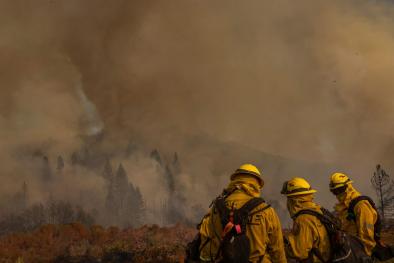Science Source
Physical Understanding of Human-Induced Changes in U.S. Hot Droughts Using Equilibrium Climate Simulations
Our analysis of climate simulation finds that summertime drought-heatwave relationships change significantly over the southern and southwest U.S. due to man-made climate change since the late 19th century.
Linyin Cheng, assistant professor of geosciences, University of Arkansas
- Although the link between droughts and heat waves is widely recognized, how climate change affects this link remains uncertain.
- Assesses how, and by how much, human-induced climate change affects summertime hot drought compound events over the contiguous United States
- Derives results by comparing hot drought statistics in long simulations of a coupled climate model (CESM1) subjected to year-1850 and year-2000 radiative forcings
- Finds a strong and nonlinear dependency of heat-wave intensity on drought severity within each climate state in water-limited regions of the southern Great Plains and southwestern United States
- Finds that heat-wave intensity is insensitive to drought severity in energy-limited regions of the northern and/or northeastern United States
- Finds that anthropogenic warming leads to enhanced soil moisture–temperature coupling in water-limited areas of the southern Great Plains and/or southwestern United States and consequently amplifies the intensity of extreme heat waves during severe droughts
- Finds that this strengthened coupling accounts for a substantial fraction of rising temperature extremes related to the long-term climate change in CESM1, highlighting the importance of changes in land–atmosphere feedback in a warmer climate
- Finds, in contrast, that coupling effects remain weak and largely unchanged in energy-limited regions, thereby yielding no appreciable contribution to heat-wave intensification over the northern and/or northeastern United States apart from the long-term warming effects
Related Content
Headline

Feb 7, 2024 | Climate Nexus Hot News
Heat And Smoke Are Worse Together Than Apart
Science Source
| Science Advances
Unprecedented climate events: Historical changes, aspirational targets, and national commitments
Noah S. Diffenbaugh, Deepti Singh, and Justin S. Mankin
Science Source
| American Meteorological Society
Sixfold Increase in Historical Northern Hemisphere Concurrent Large Heatwaves Driven by Warming and Changing Atmospheric Circulations
Cassandra D. W. Rogers , Kai Kornhuber , Sarah E. Perkins-Kirkpatrick et al
Science Source
| American Meteorological Society
Diverse Characteristics of U.S. Summer Heat Waves
Bradfield Lyon and Anthony G. Barnston


